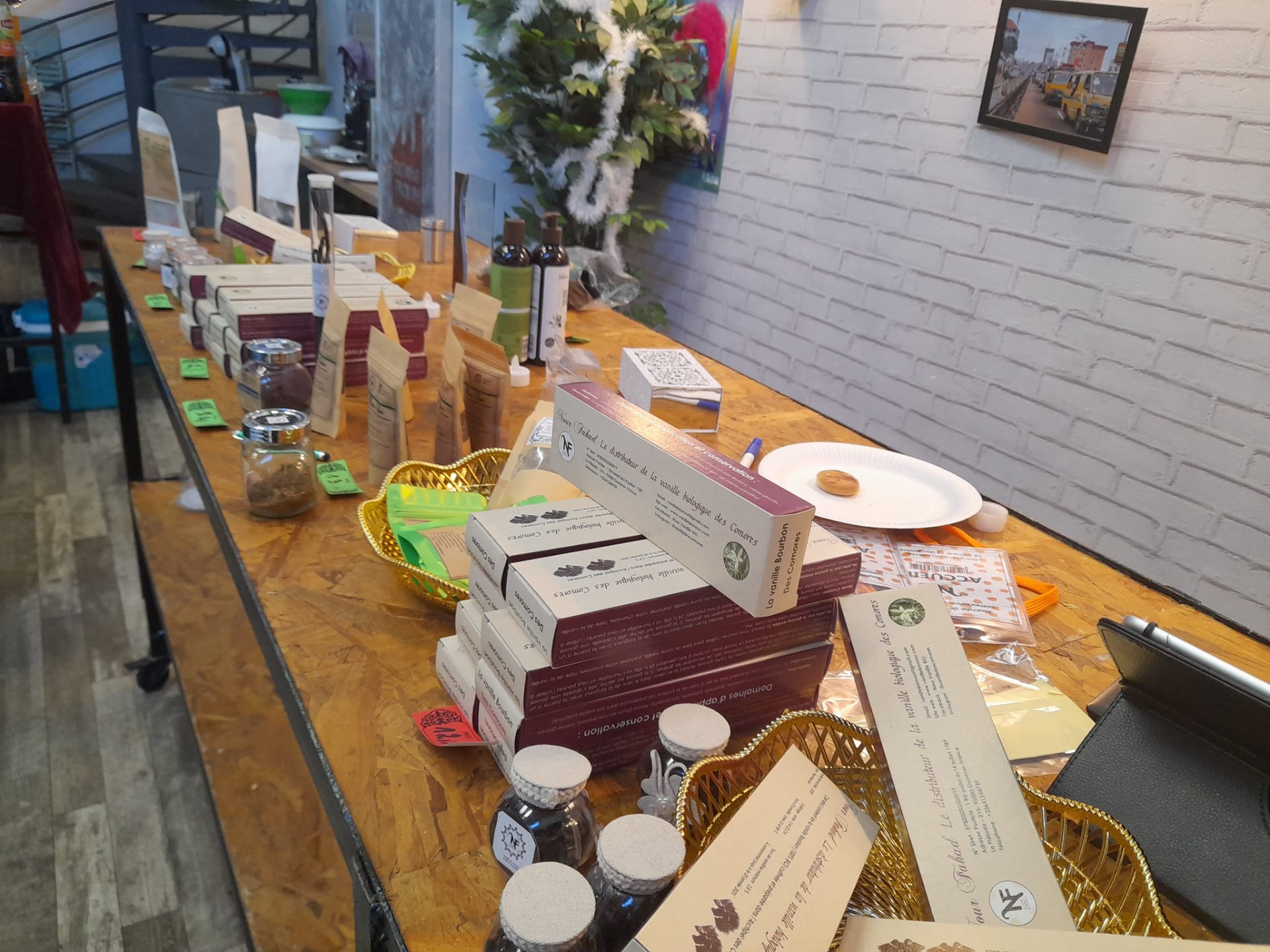The place of Comorian vanilla in world production.

1. What is vanilla?
If we want to give a definition to vanilla, we can say that it is a universal product. It can be used everywhere (in cooking, in cosmetics, in modern and traditional medicine, in phytotherapy...).
Throughout the world, vanilla is appreciated according to three elements:
- its aromas and flavours.
- its forms and varieties.
- its origins and qualities.
As a reminder, vanilla comes from the fruit of certain tropical liana orchids. The liana that is called "vanilla" in French is called "Gwe" in Comorian and the support that allows this liana to develop is called "Mdri Mzungu", the "Pourghère" in French (scientific name Jatropha curcas).
There are three types of vanilla that are sold on the world market:
- Vanilla called "Vanilla planifolia". It is mainly cultivated in the Indian Ocean (Madagascar, Reunion, Seychelles, Mauritius, Comoros, etc.).
- "Vanilla tahitensis" is cultivated in the Pacific Ocean, particularly on the island of Tahiti and in Papua New Guinea.
- and the vanilla called "Vanilla pompona". This type of vanilla is produced in Guadeloupe, Guyana and Martinique.
In the Comoros, we grow exclusively 'Vanilla planifolia', under the name 'la vanille Bourbon'.
2. Why is Comorian vanilla called "Bourbon"?
First of all, it is important to know that all vanilla cultivated in the Indian Ocean is called Bourbon.
Historically, it was at the beginning of the 19th century that "vanilla planifolia" was cultivated in the area, more particularly on the island of Reunion (called Bourbon Island at that time). In reference to this genesis, the vanilla produced throughout the Indian Ocean has been called "Bourbon vanilla" since 1964.
3. What is the difference between "Bourbon" vanilla and other vanillas?
In Mexico, vanilla is pollinated by an endemic bee (the melipone bee) which allows the vanilla plant, this type of orchid, to be fertilised. However, this bee is not present in the Indian Ocean, so it was not until 1841 and Edmond Albius, a young slave, that the principle of manual vanilla fertilisation was discovered. Today, Bourbon vanilla (a label created in 1964) is grown only in the Indian Ocean. This label distinguishes it from vanilla produced in Mexico, Uganda or Tahiti.
If you buy Bourbon vanilla, it can only be produced in the following countries
- Madagascar ;
- Reunion Island ;
- Seychelles;
4. The price of "Bourbon" vanilla.
The price of "Bourbon" vanilla varies between 120 and 1,200 euros per kilogram depending on its quality, its vanillin content, its size, its length and its origin.
5. What is the difference between "Bourbon" vanilla from the Comoros archipelago and that from other Indian Ocean countries?
As a reminder, vanilla comes from the vanilla tree, a liana that can reach more than 10 metres in height in all producing countries except the Comoros Islands. In the Comoros, the vanilla tree does not exceed 2 meters.
Thus, this climbing plant of the orchid family produces exceptional and unique pods. Their fragrant taste and exhilarating smell are the result of manual, artisanal and natural work. Vanilla beans from the Comoros archipelago contain the highest vanillin content in the world (between 1.7 and 2.4%). Their size (up to 22 cm) is ranked the best in the world by the United States (the world's largest importer of vanilla) in 2018.
Comorian production is estimated at 5%. Madagascar is one of the largest vanilla producers in the world, which is why its production can impact the entire market and cause the price of this black gold to soar.

